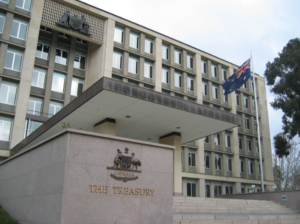A Policy Dilemma for the New Governor of RBA
On September 18th, Philip Lowe, former Deputy Governor of the Reserve Bank of Australia, took over governorship at the central bank as his predecessor Glenn Stevens capped off a 10-year tenure. Like other central banks around the world, the RBA struggles to boost the economy through monetary policies. Lowe, nevertheless, finds himself in a more difficult situation than most of his counterparts. The interest rate in Australia is already at a record low, and the economy looks unhealthy. Worse still, Australia’s real estate market is on the verge of collapsing, and the Australian household sector has become the most leveraged in the entire world.

Lowe’s daunting task starts with bringing growth back to the Australian economy. Since November 2011, the RBA has cut interest rate 13 times, dragging the rate down from 4.75% to 1.50%. Unfortunately, monetary stimulus has not worked in the same way many had hoped it would. Real net national disposable income per capita has been falling for 17 consecutive quarters. The growth rate of actual new capital expenditure stays deep in the negative. Growth of consumer spending lags far behind compared to that of the GDP. Even the inflation rate is 1% below the target. Compared to many other countries, Australia still has their options open. The interest rate is still in the positive, and the RBA has not triggered quantitative easing so far. But as the Bank of Japan and European Central Bank have demonstrated, monetary easing without structural reform of the economy yields nothing. As a result, the best strategy Lowe can take is probably to not continue with the existing trend.
While the interest rate cuts did not reverse the economic recession, it has created an overheated market for real estate. As the RBA cuts interest rates, home buyers are able to purchase property at a lower cost since most of them take out loans for the houses. Hence, rate cuts have boosted demand for housing and drove up prices. As the housing market booms, investors home and abroad begin pouring their money into the same market, expecting high returns and driving up the housing prices even more. The phenomenon reinforces itself after every interest rate cut. Due to this vicious cycle, Sydney’s housing prices have risen over 61% over the past four years. That annualized return of 15% would easily top the returns of most hedge funds.
To make the matter worse, most buyers take advantage of the low interest rate to finance the purchases. This elevates the entire issue from a market crisis to a systematic one. If the real estate bubble bursts, the banking system will face serious challenges, and banks may request bailouts from the RBA.
Lowe faces a dilemma. He has to keep liquidity in the market to help fuel the economy. But meanwhile, he must prevent the housing market from further overheating. He probably will not be able to solve this problem all by himself. It is time that the government, as opposed to the central bank alone, takes on its fair share of the responsibility.
